
What is a Pressure?
Pressure is everywhere and all around us. We can feel the air pressure exerted on our body. We feel the pressure during a long travel usually from a low to high elevation or vice versa, we feel a pop in our ears. We can also observe pressure on a pack of snack foods (commonly junk foods).
Pressure is the action of pressing. In definition, a pressure is the Force acting per unit Area.
In a formula, Pressure=F/A
Pressure Unit of Conversion

How to Measure Pressure?
The pressure is measured with the use of a measuring instrument called a pressure gauge. It is in an analog or digital display. An analog pressure gauge consists of a mechanical part where pressure sensing is through the movement of mechanical parts- the needle pointer (an example is a bourdon tube), or in a digital gauge where a sensing element is a transducer, a device that converts a signal from one form to another (an example is a diaphragm).
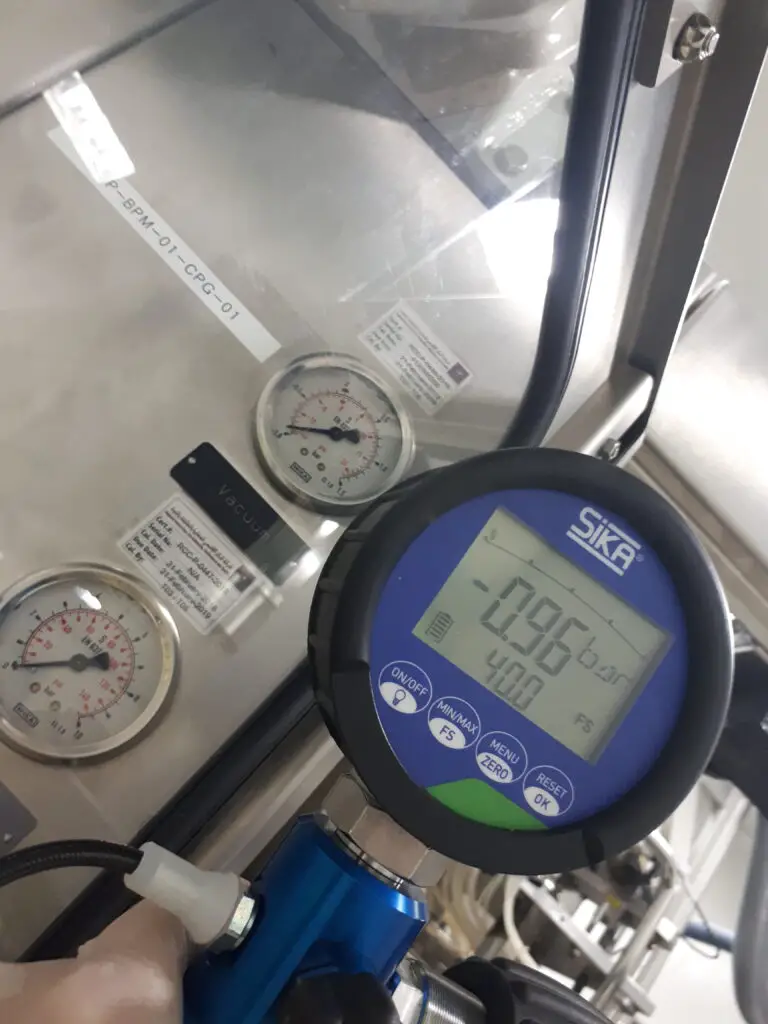
The pressure is always measured with respect to a reference, these are:
- Absolute zero
- Atmospheric
- Relative
And measured in four ways:
- Absolute pressure -This is the total system pressure ( gauge + atmospheric pressure)
- Gauge pressure – is the pressure acted upon by the system pressure above the atmospheric pressure
- Vacuum– a negative pressure acting between atmospheric pressure and absolute pressure.
- Differential Pressure – the difference between two independent-acting pressure
Some common units are Psi, Pa, Bar, mmHg, and mmH20.
Why measure pressure?
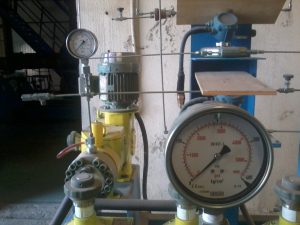
Calibration for pressure gauge is one of the basic requirement to be performed when installed. Every industry that I visited that concerns processing or manufacturing measures pressure for several reasons, the most common are the following:
- For safety -accurate control through proper measurement of pressure prevents pipes and other pressurized containers from bursting.
- Monitoring process efficiency– properly applied pressure to some processes plus other variables produces the required output.
- Cost saving– high pressure corresponds to high energy consumption, therefore controlling pressure to the exact usage also controls energy.
Analog and Digital Pressure Gauge Calibration Procedure
I will share with you an actual calibration procedure of a pressure gauge using a set of process calibrators with a pressure module, including the measurement data sheet for recording to easily understand and execute this procedure.
Objective:
To define calibration procedures for Analog/Digital Pressure Gauges
Calibration Method:
The pressure reading from the display of Fluke 754 is directly compared to the display or reading of the Unit Under Calibration (UUC) which is the pressure gauge. The Fluke 754 is a display side wherein the pressure module is the pressure sensor or transducer.
The pressure coming from the hand pump is converted to electrical signal by the pressure module then displayed by Fluke 754. Units and other parameters are also set here.
Requirements:
- Accuracy – the accuracy of the standard ( Fluke with pressure module) should be greater than the UUC or pressure gauge usually 4:1 ratio.
- Position – Calibration should be in a vertical plane
- Warm-up time – allow the reference standard and Unit Under Calibration (UUC) to stay in a room for 60 min.
- Readability – readability is based on the resolution of the gauge, a resolution is the smallest scale division of the gauge, the resolution can be divided or read by dividing it by 2, 5, or 10 depending on the capacity to read by the viewer. For example, if the smallest scale is 5 psi, if you use 2 as the divisor, the resolution will become 2.5.
– for a digital pressure gauge, this is the smallest reading that the gauge can display.
Reference Standard and Equipment:
Fluke FLUKE-754 Process Calibrator
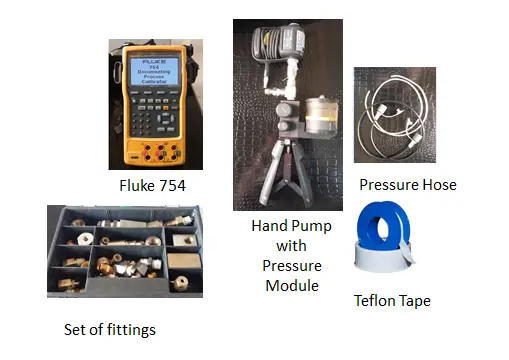
- Fluke 700P08 Pressure Module, 0 to 1000 psig
- Fluke 700HTP-2 Hydraulic Test Pump
- Thermohygrometer- to monitor temperature and humidity
- Set of fittings
- Teflon Tape
- Pressure Hose
- Set of wrenches
- Cleaning materials
- holder
Procedure:
- Inspect the UUC visually for any signs of damage ( pointer, threads, etc), readability of display, and cleanliness. Check batteries for digital pressure gauges and do an initial power-on test. Record observations on the sample data sheet below.
- Connect the pressure gauge to the pressure hose of the pressure module, If a holder is not available, hold the pressure gauge in an upright or vertical position. See to it that there is no leakage.
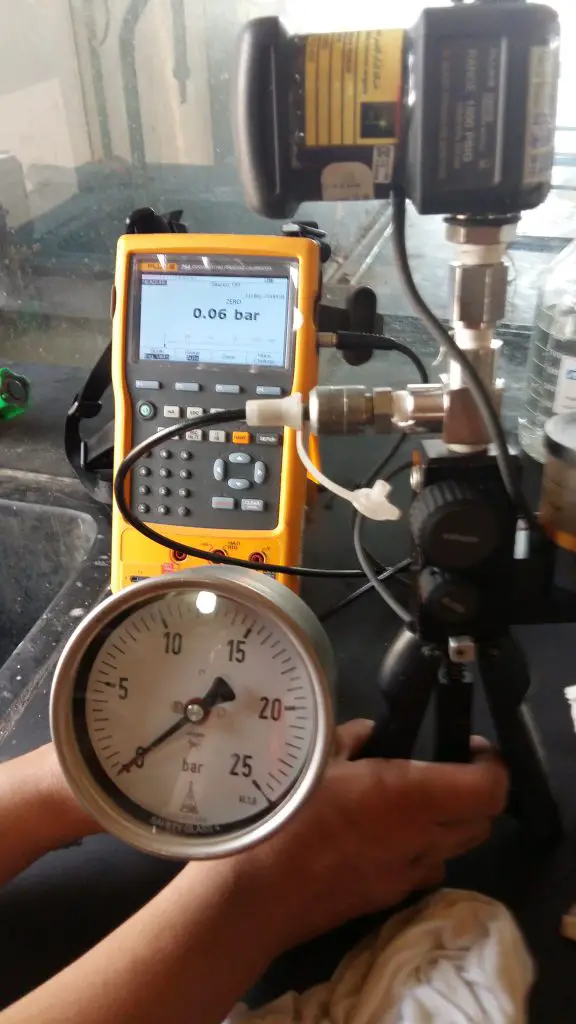
Fluke 754 and pressure module + Hand pump set-up - Position the hydraulic pump at the same level as the UUC. Close the Bleeder
knob of the hand pump (turn clockwise – see figure).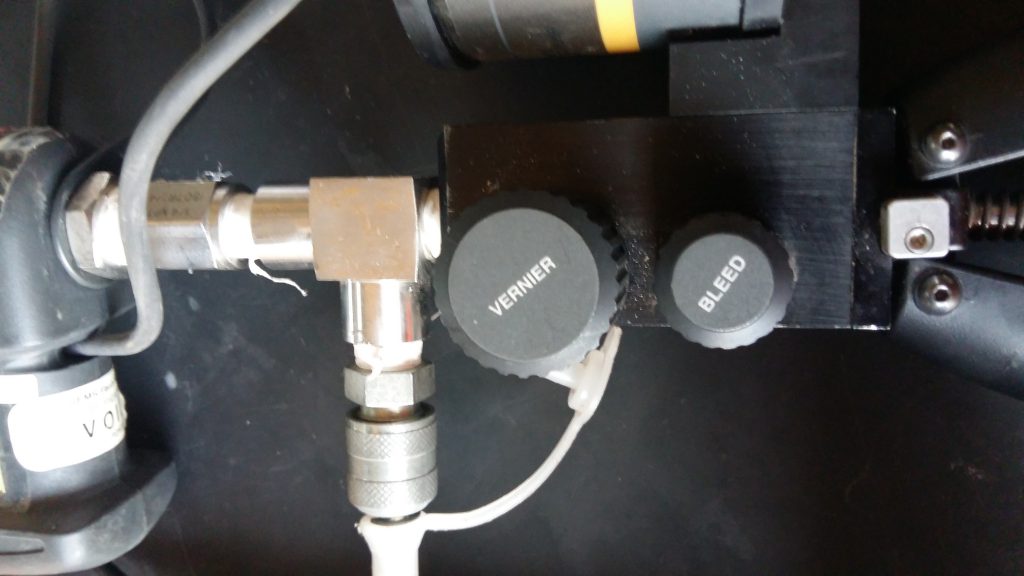
Pressure pump bleeder knob to control pressure precisely - Push the hand pump to apply pressure then check the display on the Fluke 754. Control the pressure properly to prevent damage to the pressure gauge.
- Take note of the measured value on the UUC. For analog gauges, Tap the face of the gauge every time you take a reading. To display the exact value, slowly turn the vernier knob of the hand pump (figure top left).
- Record five test points that are uniformly distributed on the range of the pressure gauge. You can follow the major scales but preferably 0%, 25%, 50% 75%, and 100% of the range.
- Record five test points that are uniformly distributed on the range of the pressure gauge. You can follow the major scales but preferably 0%, 25%, 50% 75%, and 100% of the range.
- For repeatability, repeat steps 5 to 8 twice (2x) until all required values are recorded on your data sheet.
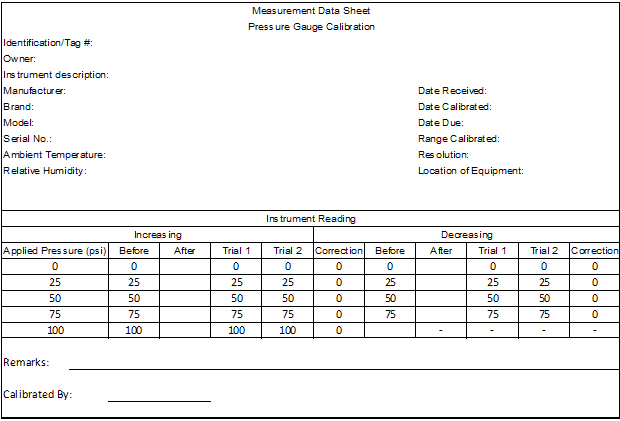
Sample Measurement Data Sheet - Calculate the tolerance limit by following the accuracy guide. Below is the accuracy class of analog pressure gauges based on the diameter of its face.

This means that if you have a pressure gauge with a 160 mm diameter with accuracy class of 0.25 (usually a test gauge), the accuracy is +/- 0.25% of its Full scale reading.
- A Full Scale reading of 250 psi has an accuracy of 0.625, (250 x 0.0025).
- So the limits should be 250+/-0.625. Above or beyond the limit should be investigated.
For a digital pressure gauge, accuracy are based on the manufacturer specifications.
10. Do necessary adjustments if the unit can be adjusted or repaired.
Visit related post here >>> 5 Techniques for adjusting a pressure gauge
11. If the readings are already within the specified limits, finalize records, put labels and seal if necessary. End
The procedure above utilizes Fluke 754 as the display of pressure and the pressure module as the sensor. Another method is by using a Digital Test Guage just in case you do not have a Fluke 754. This has a simpler setup. Just connect the Test Gauge to the same hand pump and it is now ready to go. All controls are within the Test Gauge.
While the advantage of a simpler setup is provided by the Test Gauge, the range of pressure is limited, unlike Fluke 754 which has a set of pressure modules that can be changed and purchased to suit a wide pressure range needs plus other capabilities that you can do with Fluke 754. Also, pressure modules have a higher accuracy than a test gauge.
Click on below link to check on Amazon
- Fluke 700HTP-2 Hydraulic Test Pump
- Fluke 700P08 Pressure Module, 0 to 1000 psig
- Fluke FLUKE-754 Process Calibrator
Do you need a complete pressure gauge calibration procedure? Check out this ready-made pressure gauge calibration procedure package, which consists of a procedure, measurement uncertainty calculator, a datasheet, and a calibration certificate in one package, visit this link >> buymeacoffee.com/edsponce/e/312258
Thank you for visiting, please do not hesitate to comment, share, and subscribe
Edwin
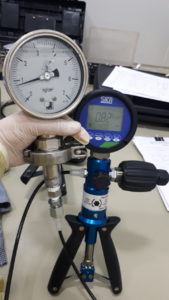

Leave a Reply